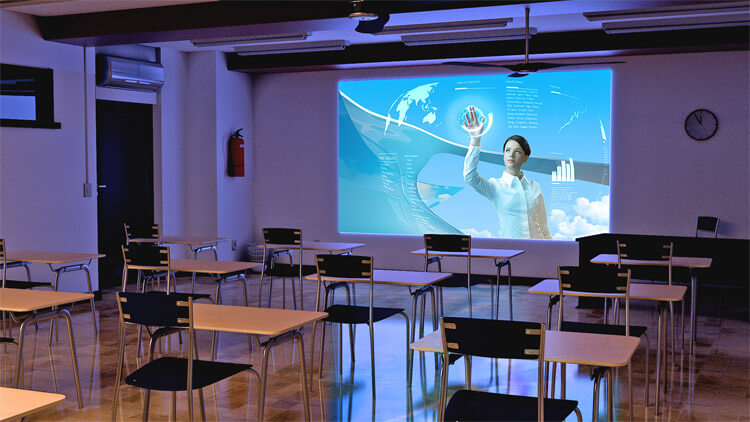- If teachers and students are working on their own in front of a projected image, they’re missing out on at least half the potential of the current generation of projectors. This ranges from the instructor calling on art students to share their work to the group to having guest lecturers appear on screen to allowing students sick at home to remotely watch what’s being projected. All it takes is a creative teacher and the right equipment.
- The time when you need cables to drive a projector is rapidly becoming ancient history because many of today’s projectors have integrated wireless capabilities that make it easier to connect and collaborate. This step forward allows the traditional one-to-one relationship between presenter and projector to be broadened to a many-to-one approach.
There are three major approaches to connecting students to projectors without a cable in sight, but has each has its pros and cons. While some of the technologies can help teach in different ways, others add complexity to an already complicated situation and are separate hardware items that raise the price of deploying projectors across a campus.
To start, there are dozens of projectors with wireless capabilities built-in. These are becoming more and more popular, although some of the budget projectors relegate WiFi to a USB-based option. Here the projector has all the gear needed to project an image from a computer to the projector over WiFi, regardless of whether it’s a phone, tablet or notebook. On the downside, you’ll need to get the right software to enable the transfer. Among others, NEC and Epson provide this route to wireless projection on some of their models.
Then, there are plug-in devices meant to retrofit projectors to become wireless. As is the case with Chromecast and AirPlay, you need to plug a receiver into the projector’s video input that grabs the signal out of thin air and puts it on the screen. On the other hand, Chromecast only allows items in some apps (including the company’s Chrome Web browser) to be transmitted.
There’s a third way that involves starting from scratch. You’ll need to get external hardware for the projector that plugs into its HDMI input that connects with a variety of computers. These devices range from Optoma’s HDCast to Barco’s ClickShare, but the devices can cost between a hundred and several thousand dollars.
Some projectors, like the Epson BrightLink family, take the notion of collaboration to another level not only by having wireless connections for students to project, but allow the screen to be split into four quadrants. Each on-screen section can be filled with a student’s screen for comparing and contrasting thimes. This broadens the classroom’s pedagogical possibilities enormously for things like comparing how a statistics problem was solved or different map mark-ups for Napoleon’s trek across Europe.
